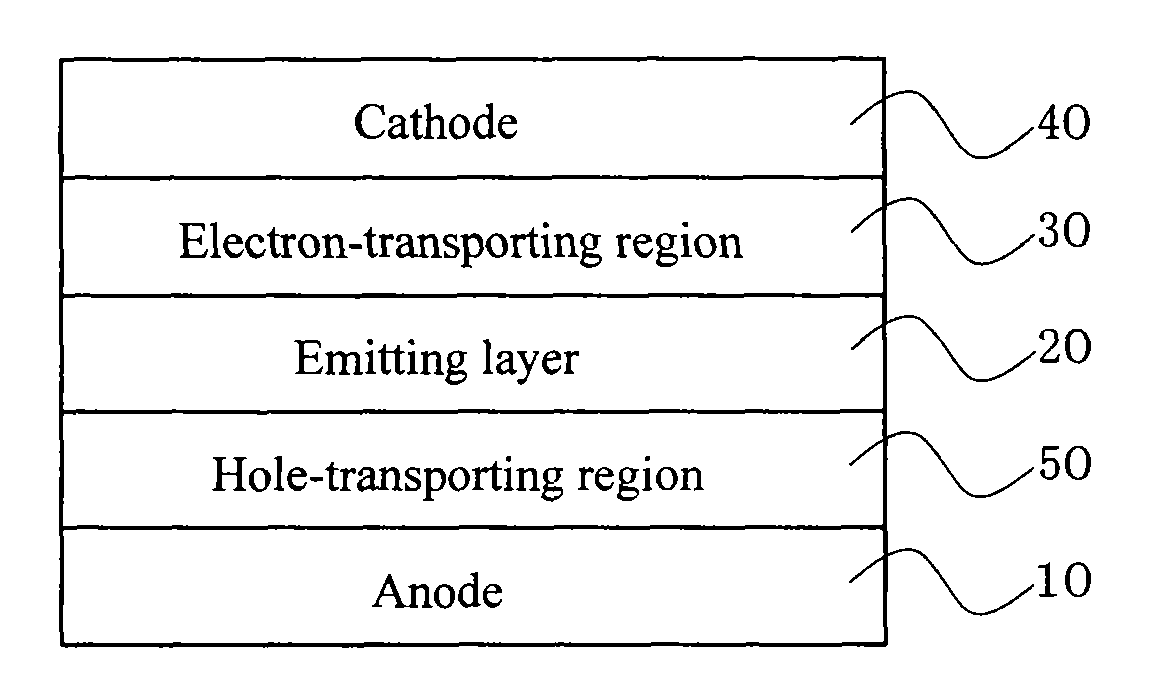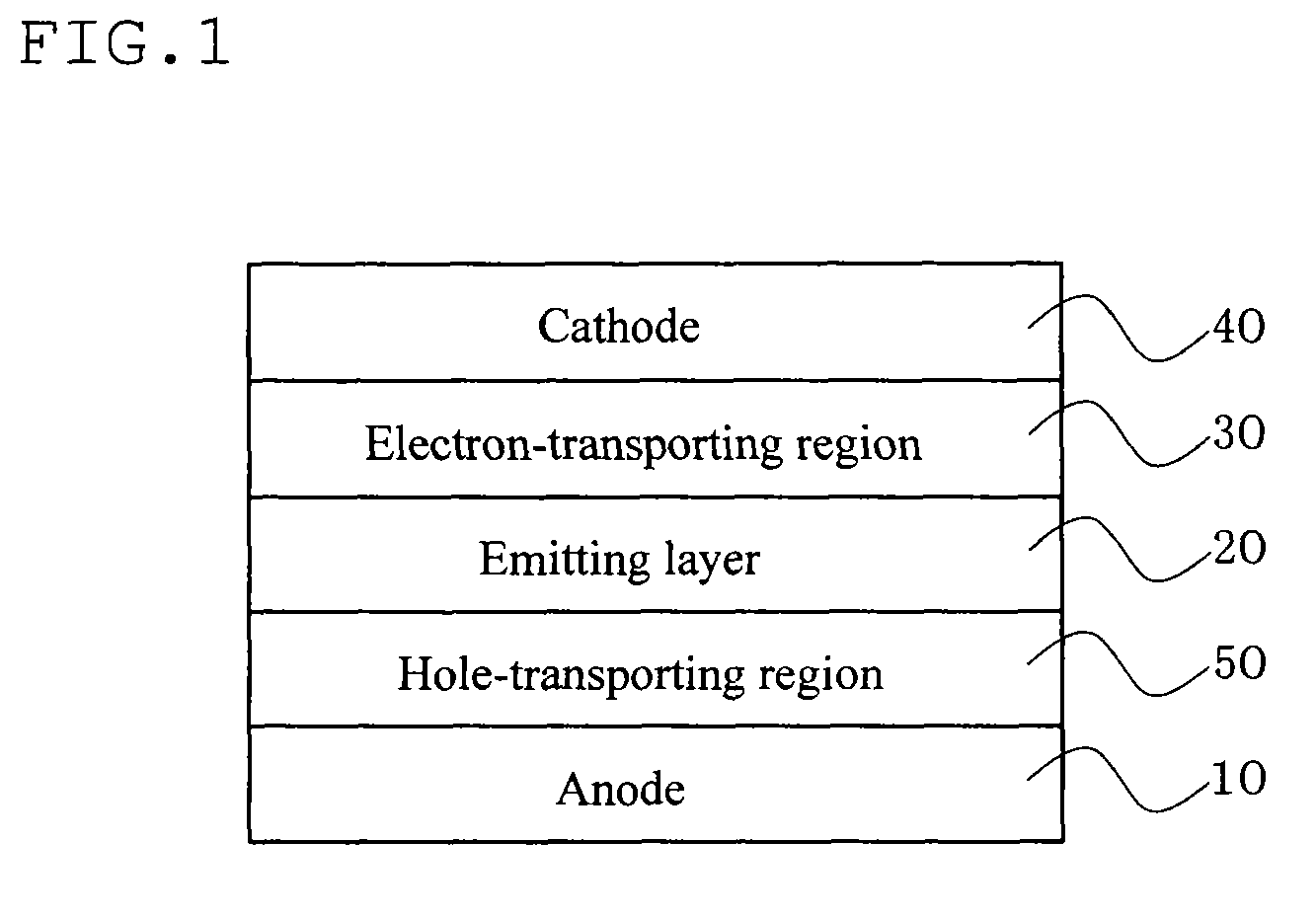Organic electroluminescent device
an electroluminescent device and organ technology, applied in the field of organic electroluminescence devices, can solve problems such as efficiency improvement, and achieve the effects of improving efficiency and lifetime of fluorescent devices, and improving efficiency of fluorescent devices
- Summary
- Abstract
- Description
- Claims
- Application Information
AI Technical Summary
Benefits of technology
Problems solved by technology
Method used
Image
Examples
example 1
[0290]HI1, HT1, BH1:BD1(co-deposition), TB1 and ET1 were sequentially deposited on a substrate on which a 130 nm thick ITO film was formed to obtain a device with the following constitution. The figures in parentheses represent a thickness (unit: nm).
[0291]ITO(130) / HI1(50) / HT1(45) / BH1:BD1(25;5 wt %) / TB1(5) / ET1(20) / LiF(1) / Al(80)
example 2
[0296]A device with the following constitution was obtained in the same manner as in Example 1, except that the film thickness of BH1:BD1 was changed to 20 nm, and the film thickness of TB1 was changed to 10 nm.
[0297]ITO(130) / HI1(50) / HT1(45) / BH1:BD1(20;5 wt %) / TB1(10) / ET1(20) / LiF(1) / Al(80)
example 3
[0298]A device with the following constitution was obtained in the same manner as in Example 1, except that HT2 was used instead of HT1.
[0299]ITO(130) / HI1(50) / HT2(45) / BH1:BD1(25;5 wt %) / TB1(5) / ET1(20) / LiF(1) / Al(80)
PUM
| Property | Measurement | Unit |
|---|---|---|
| peak wavelength | aaaaa | aaaaa |
| current efficiency | aaaaa | aaaaa |
| internal quantum efficiency | aaaaa | aaaaa |
Abstract
Description
Claims
Application Information
 Login to View More
Login to View More - R&D
- Intellectual Property
- Life Sciences
- Materials
- Tech Scout
- Unparalleled Data Quality
- Higher Quality Content
- 60% Fewer Hallucinations
Browse by: Latest US Patents, China's latest patents, Technical Efficacy Thesaurus, Application Domain, Technology Topic, Popular Technical Reports.
© 2025 PatSnap. All rights reserved.Legal|Privacy policy|Modern Slavery Act Transparency Statement|Sitemap|About US| Contact US: help@patsnap.com



